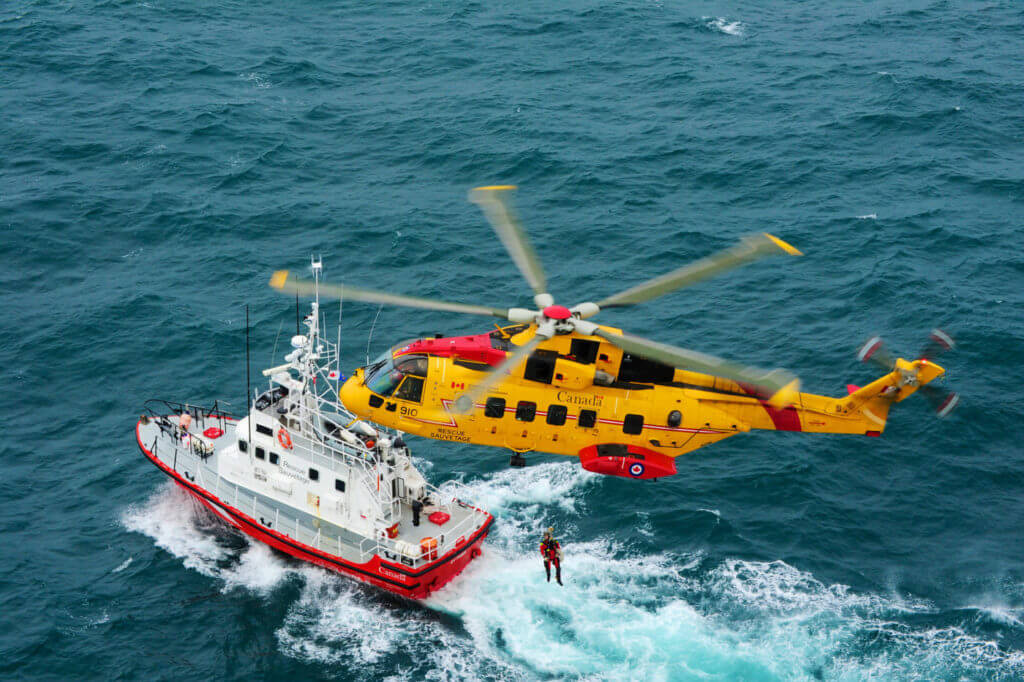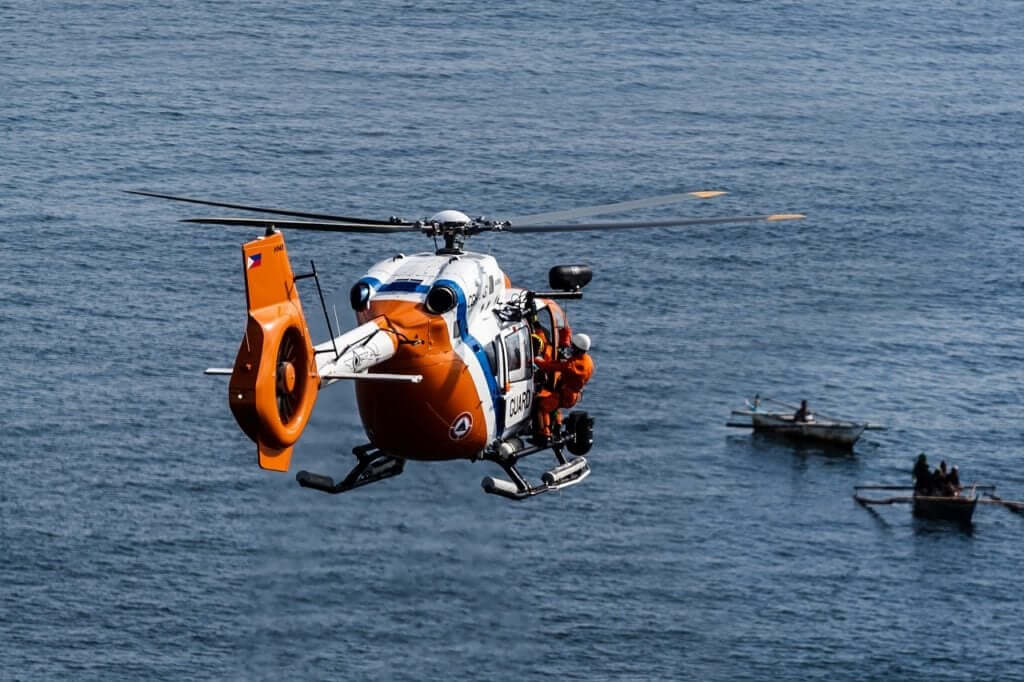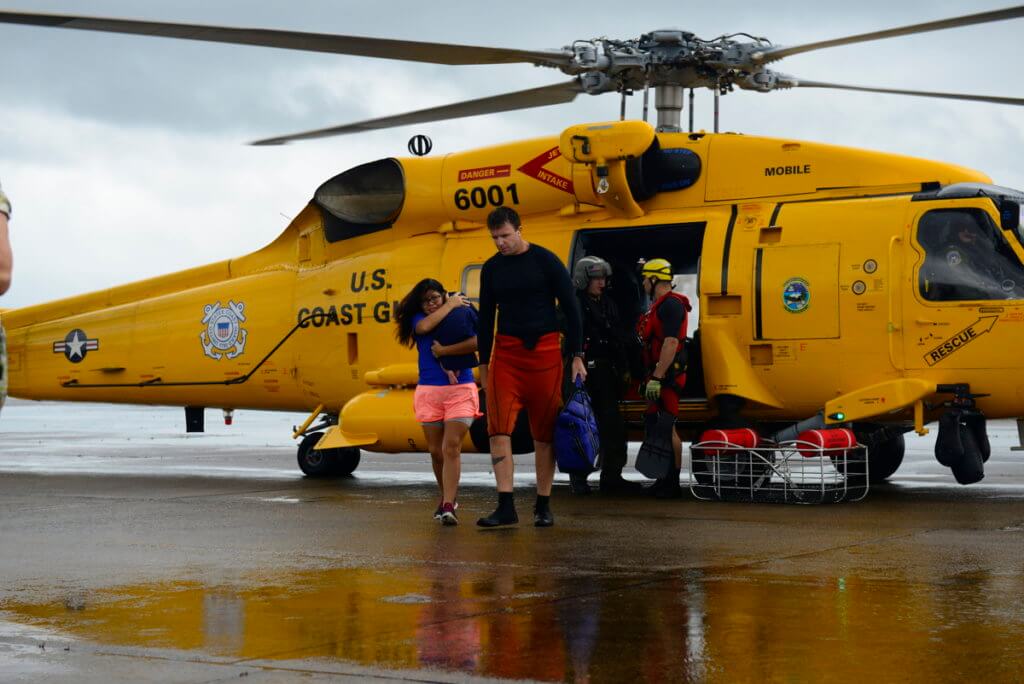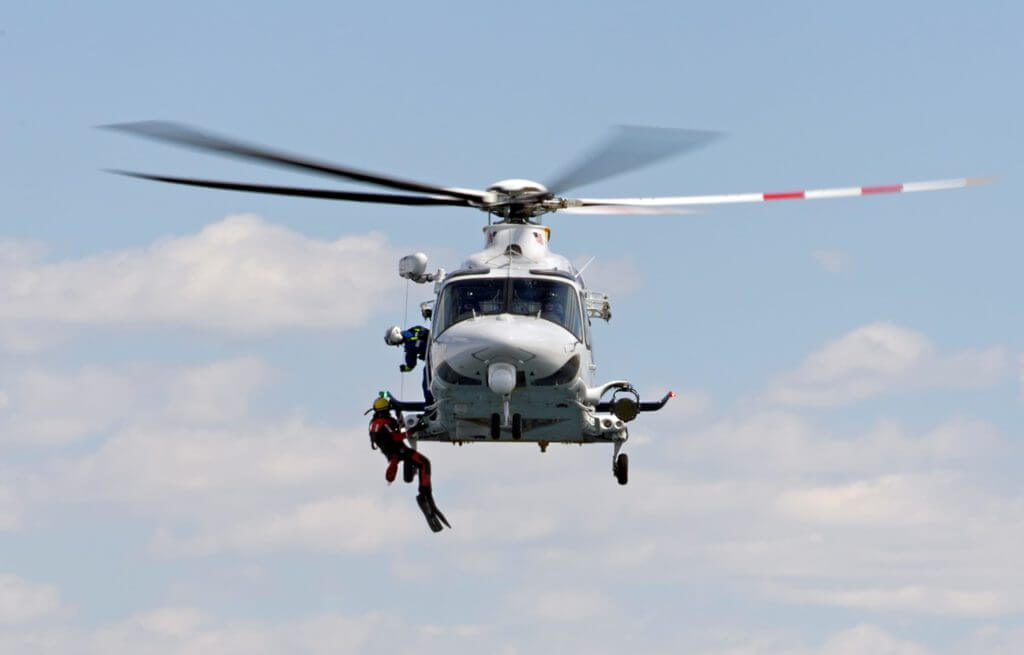Search-and-rescue (SAR) operations are often seen somehow as an elite branch of the helicopter world that requires a higher level of skill or ability as compared to other kinds of flying. Like all specialized operations it does require consistent, high-level training in a set of distinctive skills and disciplines, but this should not mean that search-and-rescue is the exclusive prerogative of particularly skilled pilots.
Alex Pollitt, helicopter SAR pilot and crew resource management (CRM) trainer, believes that what will set apart those pilots who do search-and-rescue really well from those who just do it are not “flying” skills, but rather “soft” or “non-technical” skills.

“A successful mentality in SAR requires flexibility, the ability to absorb and react to changing circumstances, taking decisions and then revisiting and being willing to change those decisions, accepting different perspectives, taking advice and even criticism and having a certain unflappability,” he said.
CRM in SAR operations
According to Rick Beery, Bristow’s lead search-and-rescue pilot based out of Galliano, Louisiana, the main aspects of CRM in SAR operations are standard procedures, standard terminology, effective training (both initial and ongoing), and detailed debriefings.
Standard procedures identify the normal way crews are to perform each mission so that every crewmember knows what to expect during the flight, Beery said. Standardized terminology gives the crew a set of words they can expect to hear for each phase of the flight, and helps them understand what is being communicated.
Effective training gives the crew an opportunity to learn and practice the standards. The debrief provides every crewmember feedback on what they were doing, good and bad, during the flight and allowing them to learn more effective CRM. The debriefings include after-flight discussions with instructors during initial training, feedback from fellow crewmembers during regular training or SAR/medevac missions and debriefs from check airmen after evaluation flights.
“We also use air safety reports during our weekly safety meetings to brief, discuss, and learn from issues that other aircrews have experienced,” Beery said. “All these critical CRM aspects should be formalized via written guidance and then understood and trained by all instructors.”
Along with initial and recurring computer-based training, instructors ensure all crewmembers understand and use the standard procedures as well as develop good crew skills. Evaluations and recurring training provides the spot checks to ensure every crewmember is aware of the policies and that they are practicing appropriate CRM.
When Pollitt runs CRM training with experienced crews, both search-and-rescue and non-SAR, and asks them to list as many of the 14 core topics that make up the CRM syllabus, most trainees cannot get beyond communication, situational awareness, and decision-making.
“This is because, even the most experienced tend to think of CRM first in terms of events within the helicopter, even though they know there is more to it than that,” Pollitt said. “SAR is usually a multi-pilot crew concept, as well as a multi-crew crew concept, where the nature of the task means that priority and leadership will move around the aircraft depending on the stage of the mission. SAR perhaps requires a more developed level of teamwork and a less rigid model of leadership than normal, but what is going on in the helicopter is only a part of the picture.”
SAR vs other missions
This kind of bias towards the “cockpit” or “crew” resource management ignores what is actually most likely to have an impact on resource management, which is often external factors, according to Pollitt.

What distinguishes search-and-rescue operations from other flight operations such as commercial air transport or offshore, and arguably even more specialist areas such as helicopter emergency medical services (HEMS) and helicopter hoist operations (HHO), is the potential multiplicity of inputs, influences, and external factors that can affect the conduct of the mission, as well as the decision-making processes both before and during the flight, Pollitt said.
“In SAR, the bubble of potential resources, supporting services, and people that could impact on the mission tend to be much larger, and therefore exponentially more complex,” Pollitt said. “These influences could include the rescue coordination center, other rescue agencies such as Coast Guard, police, fire service, and ambulance, the presence of the public sometimes in large numbers, other SAR or HEMS aircraft at the scene, or even multiple vessels involved in a search or rescue at sea.”
The choice of equipment, procedures, and variety of options open as to how one might go about the task are often more numerous and complex in SAR than in many other operations.
“In SAR there are many ways to skin a cat, and whilst some are likely to be better than others, few are likely to be the ‘right’ or ‘wrong’ way,” Politt said. “One might also have to contend with other people’s conflicting priorities such as the fishing captain who is more interested in his catch than disembarking an injured crewmember, interagency rivalries where more than one rescue service think they are best placed to achieve the task, or even the cruise liner on a tight schedule that will not alter course.”
Offshore commercial air transport and other similar operations tend to be more tightly bound and controlled by rules and procedure. Most of those flights are carried out within a set of reasonably defined parameters. Much of what is to be expected can be briefed beforehand and procedures that delineate the flight are followed.
“Even if, for example, an aircraft malfunction is experienced, the checklist guides the decision making process. If ‘A’ happens, then apply procedure ‘B,’” said Pollitt. “Nothing is that clear-cut in SAR, where most of the decisions will have to be weighed off against what is at stake both in the aircraft and on the ground, and even malfunction actions in a checklist can vary depending on the type of mission.”
Training for CRM
Effective CRM training allows each crewmember to effectively contribute to the success of a mission, whether it is training or an actual SAR/medevac scenario. CRM training is delivered through a combination of dedicated initial qualification training and annual recurring training and evaluations that are reinforced on every flight, Beery said.
CRM training sessions should be a forum for an organization to critically appraise its activities, procedures and the way it operates, Beery said.
“They are a chance to get together at least once a year and ask ‘What did we get wrong and why?’ and ‘What could we do better?’; ‘How can we develop?’ and ‘Where are we getting left behind?’” Pollitt said. “There is a time and place to raise safety concerns and propose changes. In doing this, discussions will delve naturally into areas such as communication, culture, workload management, teamwork, situational awareness, and all the rest of the things that we are ‘required’ to talk about.”

Professional search-and-rescue crews with a good CRM culture ask the above questions before and after training flights, and particularly search-and-rescue missions, as part of their normal briefing cycle.
“Sometimes there will not be too much to say, but after jobs with lots of moving parts, external factors, and complexities in the task, a debrief is very likely to go into the kind of depth that you might get into during a CRM training case study,” Pollitt said. “This really underlines the point that in an operation with a good CRM culture, the non-technical aspects of crew cooperation and communication that are specific to SAR will be integrated into the everyday cycle of SAR flying and training, and are being constantly worked on and developed.”
Combined training
In search-and-rescue, it is important that CRM training be combined with classroom instruction that includes input from all crewmembers.
“Given the nature of the task, it would be impossible to have a full and effective conversation about what we do without having inputs from all perspectives around the aircraft, as well as the winch man on the wire or on the ground,” Pollitt said. “The most effective way of doing it is together, as a team and face to face. If one starts with a critical appraisal of one’s operations, then topics tend to self-generate, and can then be guided to follow certain themes according to where one wants to take the training. In this sense it is very much like a debrief.”
Beery said it is essential to conduct combined training with all crewmembers. While academic discussions, written processes and procedures, and computer-based training can provide a basis for CRM, nothing beats actual practice with a full crew, he said.
“I believe the most effective way to train is to develop realistic scenarios that continually reinforce good CRM techniques and procedures,” Beery said. “We have developed a notebook with over 30 potential scenarios for crew to discuss at crew briefs. These scenarios can be used or modified for flight training. In addition, for each flight training sortie, the pilot in command (PIC) is responsible to utilize flight time effectively for the entire crew to practice and improve their CRM skills.”
In choosing case studies to evaluate, it is necessary to look for scenarios that will resonate with crews but they do not have to involve the same aircraft, task, or even sector of aviation as they are working in, Pollitt said.
“It does not have to be aviation at all,” Pollitt said. “But it does need to strike a chord with something which they feel has happened or could happen to them. That creates the starting point for empathy and then introspection, the latter of which is one of the main purposes of the training.”
Managing safety
One of the purposes of CRM training sessions is to raise or tease out specific safety issues that may be occurring in the operation or its culture. If the training succeeds at this, then it allows these issues to be fed back into an operator’s safety management system (SMS).

“SMS plays an important role in the overall CRM program,” Beery said. “Reports from other crews and organizations can identify situations that have challenged good communications and CRM. During the safety meetings and CRM training everyone can learn from the experience of other crews.”
Pollitt said a good CRM setup is an essential component of the response received from crews that leads to changes in safety policies and practices.
“It is a sound method to scan all the company occurrence reports to look for trends or specific events to raise during CRM training sessions with the crews,” Pollitt said. “This serves a dual purpose. Firstly it is a great way of ensuring one is raising something specifically relevant to things that have happened in the operation which really helps with the levels of interest generated, and secondly, of course the hope is to address the problem itself directly.”





